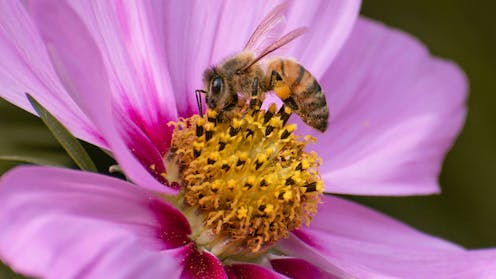
For decades, beekeepers worldwide have battled the Varroa destructor, a parasite that has wreaked havoc on honey-bee colonies. Now, a new threat looms as the Tropilaelaps mercedesae, colloquially known as “tropi,” begins to spread. This mite is feared to cause even greater destruction than its predecessor, with potential ripple effects impacting billions who depend on honey bee-pollinated crops.
From Asia to Europe: The Spread of Tropi
Tropi’s natural host is the giant honey-bee (Apis dorsata), prevalent across South and Southeast Asia. However, the mite has made a significant leap to the western honey-bee (Apis mellifera), which is globally maintained by beekeepers. This shift has allowed the parasite to move steadily westward.
Currently, tropi has been detected in Ukraine, Georgia, and southern Russia, with suspicions of its presence in Iran and Turkey. From these regions, it is anticipated to infiltrate eastern Europe and continue its spread across the continent. The threat also looms over Australia and North America.
Understanding Tropi’s Rapid Spread
Much like varroa, tropi is a tiny mite that breeds inside capped brood cells—stages in the honey-bee lifecycle where larvae and pupae develop within wax-sealed honeycomb cells. While varroa can survive on adult bees for extended periods, tropi cannot. It only survives a few days outside brood cells, swiftly moving across the comb in search of new larvae.
Tropi’s reproductive cycle is faster than varroa’s. A cell infested with a female tropi can result in more offspring emerging than a varroa-infested cell, quickly overwhelming the colony. Consequently, colonies infested with tropi can collapse much faster than those plagued by varroa.
Current Control Methods and Challenges
In Asia, where the parasite is already established, beekeepers often manage it by caging the queen for about five weeks. This halts egg-laying and brood development, depriving the mites of a food source. While effective for small-scale operations, this method is impractical for large commercial beekeeping in Europe.
Another potential solution is treating hives with formic acid, which penetrates brood cell caps and kills the mites without harming the developing bees, provided concentrations are controlled. This treatment could offer a practical tool for beekeepers.
Why Varroa Treatments Fall Short
Many wonder if the chemicals used against varroa could combat tropi. Unfortunately, the answer is largely negative. Varroa spends much of its life on adult bees, where it encounters miticides spread throughout the colony. Tropi, however, rarely attaches to adults and instead moves across comb surfaces, making it less exposed to chemical residues. Consequently, treatments effective against varroa are often ineffective against tropi.
Managing both mites simultaneously poses significant challenges. Combining treatments risks harming colonies or contaminating honey. For instance, interactions between formic acid for tropi and amitraz for varroa could be lethal to bees. Additionally, overuse of varroa treatments has led to resistant strains, reducing the efficacy of several once-reliable chemicals. Introducing more compounds to combat tropi without careful pest management could exacerbate resistance issues.
The Wider Impact on Agriculture
The spread of tropi threatens not just beekeepers but agriculture as a whole. Honey-bees are crucial pollinators for many crops, and increased hive losses will raise costs for honey production and pollination services, impacting food prices and availability.
Research is underway in countries like Thailand and China to develop better management strategies. However, without effective and practical treatments, the global spread of this new mite could be catastrophic.
“The story of varroa shows how quickly a single parasite can transform global beekeeping. Tropi has the potential to be even worse: it spreads faster, kills colonies more quickly, and is harder to control with existing methods.”
This analysis underscores the urgent need for innovative solutions to protect the world’s bee populations and, by extension, global agriculture.
The author acknowledges the contribution of Robert Owen, a beekeeper who completed a PhD on the varroa mite at the University of Melbourne in 2022, to this article.
/Courtesy of The Conversation. This material from the originating organization/author(s) might be of the point-in-time nature, and edited for clarity, style, and length. Mirage.News does not take institutional positions or sides, and all views, positions, and conclusions expressed herein are solely those of the author(s).







